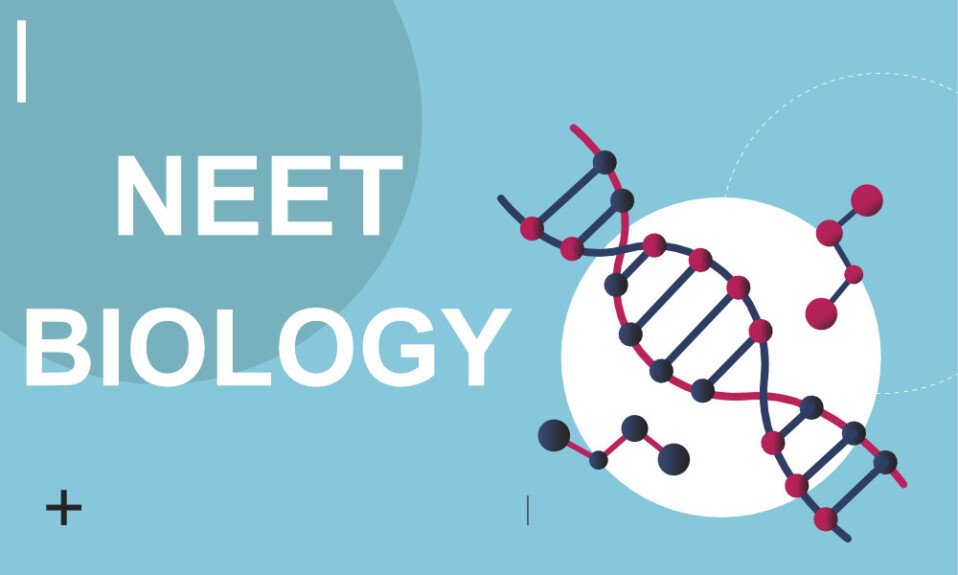1. The medium used in membrane filter technique was
(a). EMB agar
(b). EMR-Vp medium
(c). Lactose broth
(d). Endo agar
Answer:(b). EMR-Vp medium
2. Lysol is
(a). Sterilant
(b). Disinfectant
(c). Antiseptic
(d). Antifungal agent
Answer:(b). Disinfectant
3. Which of the following is a neutral stain?
(a). Picric acid
(b). Giemsa
(c). Neutral red
(d). Malachite green
Answer:(c). Neutral red
4. Peptone water medium is an example for
(a). Synthetic medium
(b). Semisynthetic medium
(c). Differential medium
(d). None of these
Answer:(b). Semisynthetic medium
5. The method in which the cells are frozen dehydrated is called
(a). Pasteurization
(b). Desiccation
(c). Disinfection
(d). Lyophilization
Answer:(d). Lyophilization
6. The technique used to avoid all microorganisms is accomplished by
(a). Sterilization
(b). Disinfection
(c). Surgical sterilization
(d). Disinfection Sterilization
Answer:(a). Sterilization
7. Thermal death time is
(a). Time required to kill all cells at a given temperature
(b). Temperature that kills all cells in a given time
(c). Time and temperature needed to kill all cells
(d). All of the above
Answer:(b). Temperature that kills all cells in a given time
8. A culture medium the exact composition of which is not known was called as
(a). Simple
(b). Complex
(c). Defined
(d). Natural
Answer:(a). Simple
9. Elek’s gel diffusion test is used for the detection of
(a). Tetani toxin
(b). Cholera toxin
(c). Diphtheria toxin
(d). Toxoid
Answer:(c). Diphtheria toxin
10. Temperature required for pasteurization is
(a). Above 150oC
(b). Below 100oC
(c). 110oC
(d). None of these
Answer:(b). Below 100oC
11. Separation of a single bacterial colony is called
(a). Isolation
(b). Separation
(c). Pure culturing
(d). All of these
Answer:(a). Isolation
12. Which of the following is ion iz ing radiation?
(a). U.V. rays
(b). IR
(c). γ-rays
(d). None of these
Answer:(c). γ-rays
13. Which of the following induces dimerisation of thymine?
(a). X-rays
(b). U.V. rays
(c). a-rays
(d). None of these
Answer:(b). U.V. rays
14. When food materials are preserved at a temperature just above freezing temperature, the process is called.
(a). Freezing
(b). Pasteurisation
(c). Chilling
(d). Frosting
Answer:(c). Chilling
15. Which of the following methods of sterilization has no effect on spores?
(a). Drying
(b). Hot air oven
(c). Autoclave
(d). None of these
Answer:(a). Drying
16. Treponema pallidum can be best identified using
(a). Fluorescence microscope
(b). Bright field microscope
(c). Dark field microscope
(d). Fluorescence microscope
Answer:(b). Bright field microscope
17. Autoclaving is carried at
(a). Dry heat
(b). Atmospheric pressure
(c). 120oC
(d). All of these
Answer:(c). 120oC
18. Temperature in pasteurization is
(a). 62.8o C
(b). 35.7o C
(c). 68.2oC
(d). 60.8o C
Answer:(a). 62.8o C
19. The bacterial culture prepared by pure culture method is
(a). Inoculum
(b). Suspension
(c). Dilution
(d). None of these
Answer:(a). Inoculum
20. Algae are rich in
(a). Carbohydrates
(b). Proteins
(c). Vitamins
(d). All of these
Answer:(d). All of these
21. L-Lysine is produced from
(a). Corynebacterium glutamicum
(b). Clostridium botulinum
(c). Mycobacterium sps
(d). Pseudomonas
Answer:(a). Corynebacterium glutamicum
22. The orderly increase in the quantity of all of the cellular components is known as
(a). Reproduction
(b). Growth
(c). Binary fission
(d). None of these
Answer:(b). Growth
23. Theobacillus thio oxidans grow at pH
(a). 7.0
(b). 1.0
(c). 6.0
(d). 9.5
Answer:(b). 1.0
24. Slow freezing requires the conditions
(a). 0o C to 15o C for 15 min.
(b). – 6 o C to – 10o C for 10 min.
(c). – 15o C to 3 to 72 hrs.
(d). None of these
Answer:(c). – 15o C to 3 to 72 hrs.
25. Discontinuous heating is called
(a). Pasteurization
(b). Sterilization
(c). Fermentation
(d). Tyndallization
Answer:(d). Tyndallization
26. Isolation is
(a). Purification of culture
(b). Introduction of inoculum
(c). Separation of a single colony
(d). To grow microorganisms on surfaces
Answer:(c). Separation of a single colony
27. The condition required for autoclave
(a). 121o C temp.and 15 lbs. pressure for 20 min.
(b). 120o C temp.and 20 lbs. pressure for 30 min
(c). 150o C temp.for 1 hr.
(d). 130o C temp for 2 hr.
Answer:(c). 150o C temp.for 1 hr.
28. Lysozyme is effective against
(a). Gram negative bacteria
(b). Gram positive bacteria
(c). Protozoa
(d). Helminthes
Answer:(b). Gram positive bacteria
29. Blood agar medium is
(a). Enrichment medium
(b). Enriched medium
(c). Selective medium
(d). Differential medium
Answer:(b). Enriched medium
30. Infrared radiation is a method of sterilization by
(a). Dry heat
(b). Moist heat
(c). Chemical method
(d). Mechanical method
Answer:(d). Mechanical method
31. Lyophilization means
(a). Sterilization
(b). Freeze-drying
(c). Burning to ashes
(d). Exposure to formation
Answer:(b). Freeze-drying
32. Temperature used for
(a) hot air oven is a. 100o C for 1 hour
(b). 120o C for 1 hour
(c). 160o C for 1 hour
(d). 60oC for 1 hour
Answer:(c). 160o C for 1 hour
33. Phenol co-efficient indicates
(a). Efficiency of a disinfectant
(b). Dilution of a disinfectant
(c). Purity of a disinfectant
(d). Quantity of a disinfectant
Answer:(a). Efficiency of a disinfectant
34. This is an agar plate method and is commonly used for estimation of the number of bacteria in milk.
(a). Standard Plate Count (SPC)
(b). Spread plate
(c). Lawn culture
(d). Roll tube method
Answer:(a). Standard Plate Count (SPC)
35. Agar is obtained from
(a). Brown algae
(b). Red algae
(c). Green algae
(d). Blue-green algae
Answer:(b). Red algae
36. A gram positive organism which produces swarming on culture medium is
(a). Salmonella
(b). Clostridium
(c). Staphylococci
(d). Proteus
Answer:(d). Proteus
37. Enhancement of virulence in bacteria is known as
(a). Pathogenicity
(b). Attenuation
(c). Exaltation
(d). Toxigenicity
Answer:(c). Exaltation
38. For effective sterilization in an autoclave the temperature obtained is
(a). 50o C
(b). 100o C
(c). 120oC
(d). 180o C
Answer:(c). 120oC
39. Spores are killed by
(a). 70% alcohol
(b). Glutaraldehyde
(c). Autoclaving
(d). Both b and c
Answer:(d). Both b and c
40. Glassware is sterilized by
(a). Autoclaving
(b). Hot air oven
(c). Incineration
(d). None of these
Answer:(b). Hot air oven
41. Tyndallization was proposed by
(a). Tyndall
(b). Pasteur
(c). Koch
(d). Jenner
Answer:(a). Tyndall
42. Viruses can be cultivated in
(a). Lab media
(b). Broth
(c). Living cells
(d). None of these
Answer:(c). Living cells
43. By pasteurization
(a). All the microorganisms can be removed
(b). Only pathogenic forms can be removed
(c). Only non-pathogenic forms can be removed
(d). All of these are correct
Answer:(b). Only pathogenic forms can be removed
44. The temperature required for pasteurization is
(a). Above 100oC
(b). Below 100oC
(c). 100oC
(d). None of these
Answer:(b). Below 100oC
45. In the medium other than nutrients, if any substance is used in excess, that medium is
(a). Enriched medium
(b). Special medium
(c). Enrichment medium
(d). None of these
Answer:(a). Enriched medium
46. Example for indicator medium is
(a). Nutrient Agar
(b). Nutrient broth
(c). Wilson and Blair
(d). Czapek-dox medium
Answer:(c). Wilson and Blair
47. Example of Anaerobic medium is
(a). Robertson cooked-meat medium
(b). Nutrient agar
(c). Nutrient broth
(d). Mac-Conkey’s agar
Answer:(a). Robertson cooked-meat medium
48. The differentiate lactose and non-lactose fermenters, the medium used is
(a). Wilson & lair
(b). Blood Agar
(c). Tetrathionate broth
(d). Mac-Conkey’s Agar
Answer:(d). Mac-Conkey’s Agar
49. Best method for getting pure culture is
(a). Streak-plate
(b). Agar slant
(c). Both a & b
(d). None of these
Answer:(c). Both a & b
50. To transfer cultures from one place to another, the device used is
(a). Slant
(b). Needle
(c). Inoculation loop
(d). Autoclave
Answer:(b). Needle




